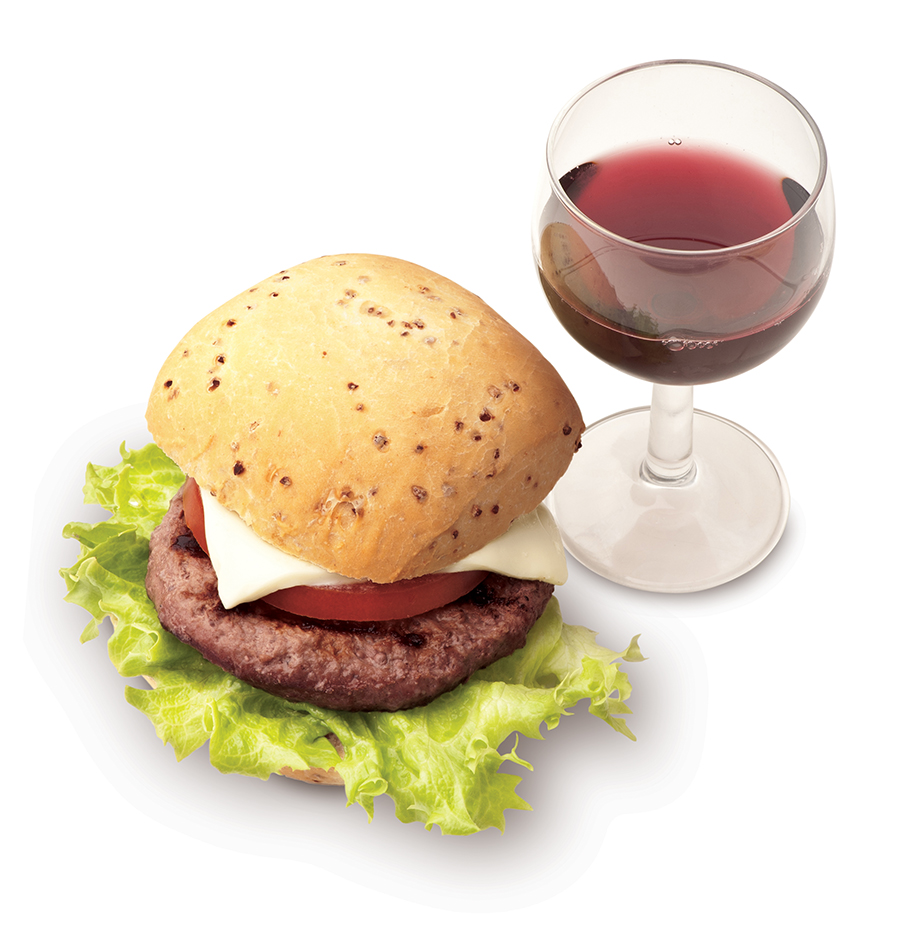By Matthew DeBord
HQ 84 | WINTER 2014
If “Zinfandel” still means an inexpensive bottle of sweet, pink wine drunk well chilled at a picnic or summer barbecue, then you need to catch up with current events. Zinfandel, true Zinfandel, goes way beyond the pink.
Plus, Zinfandel is a wine that comes with a story — a detective story.
For quite some time, it was assumed in the wine world that all the worthwhile grapes, the so-called “noble varieties” such as Cabernet and Chardonnay, came from Europe. In America, “native” grapes were made into wine, but it was far inferior to that which came from the royal fruit of the Old Country.
Gradually, as the U.S. and especially the California wine industry took off in the 1970s and ’80s, vintners planted more and more vineyards of noble varieties. But there was one oddball, a single grape that was a curious holdover from the 19th century. It was called Zinfandel, and no one was sure where it came from.
For decades, it was assumed that it was the one “native” American grape that made halfway decent wine. White Zinfandel — the aforementioned sweet, pink stuff — became a marketing sensation just as the California wine business was rising up to challenge the wines of Europe. Americans had a long history of favoring sweet wines, but with White Zinfandel, they had a homegrown version that meant they didn’t have to choose German Riesling or worse, the old-timey wines of regions like New York’s Hudson Valley.
Meanwhile, some winemakers had concluded that a good-quality dry red wine could also be produced from Zinfandel grapes. They had some experience on this front, as plenty of Zinfandel had been blended into mass-marketed “jug” wines over the years, or turned into cheap American Port.
And of course they all continued to think that there was something special about Zinfandel because it was “America’s grape.” If wine is “bottled poetry,” then Zinfandel was bottled patriotism.
The 1990s and 2000s were a good time for Zin. It established an identity for itself as a sort of rustic alternative to Cabernet Sauvignon and Merlot. A cult following, complete with yearly Zinfandel festivals in California, developed. Winemakers in all the prestigious regions — Napa, Sonoma, Paso Robles and so on — started making it, at a variety of price points.
A guy named Paul Draper was one of the critical personalities in the Zin revival. His winery, Ridge, was already well known in the ’70s and ’80s for its Monte Bello Cabernet. But he became arguably more famous for Ridge’s range of vineyard-designated Zinfandels, which came from “old vines.” Typically, a winemaker won’t let a vine produce grapes forever — over time the vines become thick, massive and gnarled, more like trees than vines. But Draper recognized that California’s old Zin vines could yield special fruit in the right areas.
But even Draper wasn’t completely sure if these ancient vines were American originals.
Nor was Joel Peterson, the winemaker at Ravenswood, who took Zin in a more mass-market direction, particularly with his “Vintner’s Blend” Old Vine Zinfandel and his slogan, “No Wimpy Wines.” Draper’s Zins tend to be powerful yet subtle, with deep nuances of flavor. Not so of Ravenswood’s signature wine, which can be found for around $12 at most grocery stores that carry wine, as well as many wine shops. It’s big, it’s bold, it holds nothing back. It’s the world’s greatest hamburger wine. (Ridge Zinfandels like a burger, too, but they get along pretty well with barbecue, grilled steaks, lamb and other rather more culinary complex chunks of protein.)
Following the lead of these two California Zinfandel enthusiasts, other winemakers began to explore the possibilities of what they thought was a neglected American grape. A skilled winemaker named Helen Turley pushed the envelope with Zins than had very high levels of alcohol. (Zin is a sugary grape by nature, so winemakers can really go nuts when they ferment that sugar into alcohol.) Her Zins are expensive and nearly Port-like in their richness, even though they are still dry red wines. It can be hard to drink a glass and then drink another without getting a little dizzy.
Nowadays, you can easily find “important” Zins from Ridge, Ravenswood, Turley, Seghisio and others, as well as less expensive bottlings from high-output producers, priced below $10. The unifying feature of them all is a bold, aggressive style, with the cheaper Zins tending toward jammy flavors while the higher-end models exhibit complex roasted meat, warm dark fruit elements, intense herbal undercurrents and ancient, wild echoes from a time before wine was domesticated.
Good story, right? But what about the detective part? Well, as Zin began to be rediscovered, scientists wanted to know where it came from. They eventually linked it to a similar Italian grape, Primitivo, but they were unsure whether Primitivo was Italian Zinfandel or if Zinfandel was American Primitivo. It seemed likely, however, that Primitivo was brought to the U.S. at some point, with a descendant renamed “Zinfandel.”
Then genetic testing discerned that both Primitivo, which is largely grown in the southern Italian region of Puglia, and Zinfandel had a common ancestor in Croatia. So in the end, this “all American” grape turned out to be an immigrant from Eastern Europe whose background was lost in the mists of viticultural history. One fact remained: in America, Zinfandel became the one non-noble grape that has really given royalty a run for its money.





